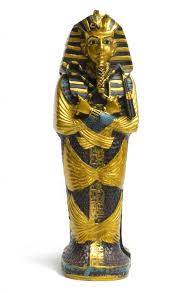Sarcophagus: Ancient Graves

Palestinian workers in the Gaza Strip recently found dozens of ancient graves, including two Sarcophagus made of lead, in a cemetery dating back about 2,000 years to the Roman Empire.
- Sarcophagus is an above-ground stone container for a coffin or dead body that often is often decorated with art, inscriptions, and carvings.
- The word sarcophagus comes from the Greek “sarx” meaning “flesh,” and “phagien” meaning “to eat,” so that sarcophagus literally translates as “eater of flesh.”
- First used in Ancient Egypt and Ancient Greece, the sarcophagus gradually became popular throughout the ancient world.
- It carried over through the later years of European society, often used for high status members of the clergy, government, or aristocracy.
- They are almost always made of stone, limestone being the most popular, but sometimes of granite, sandstone, or marble.
- They were usually made by being carved, decorated, or constructed ornately.
- Some were built to be freestanding above ground, as a part of an elaborate tomb or tombs.
- Others were made for burial, or were placed in crypts.




